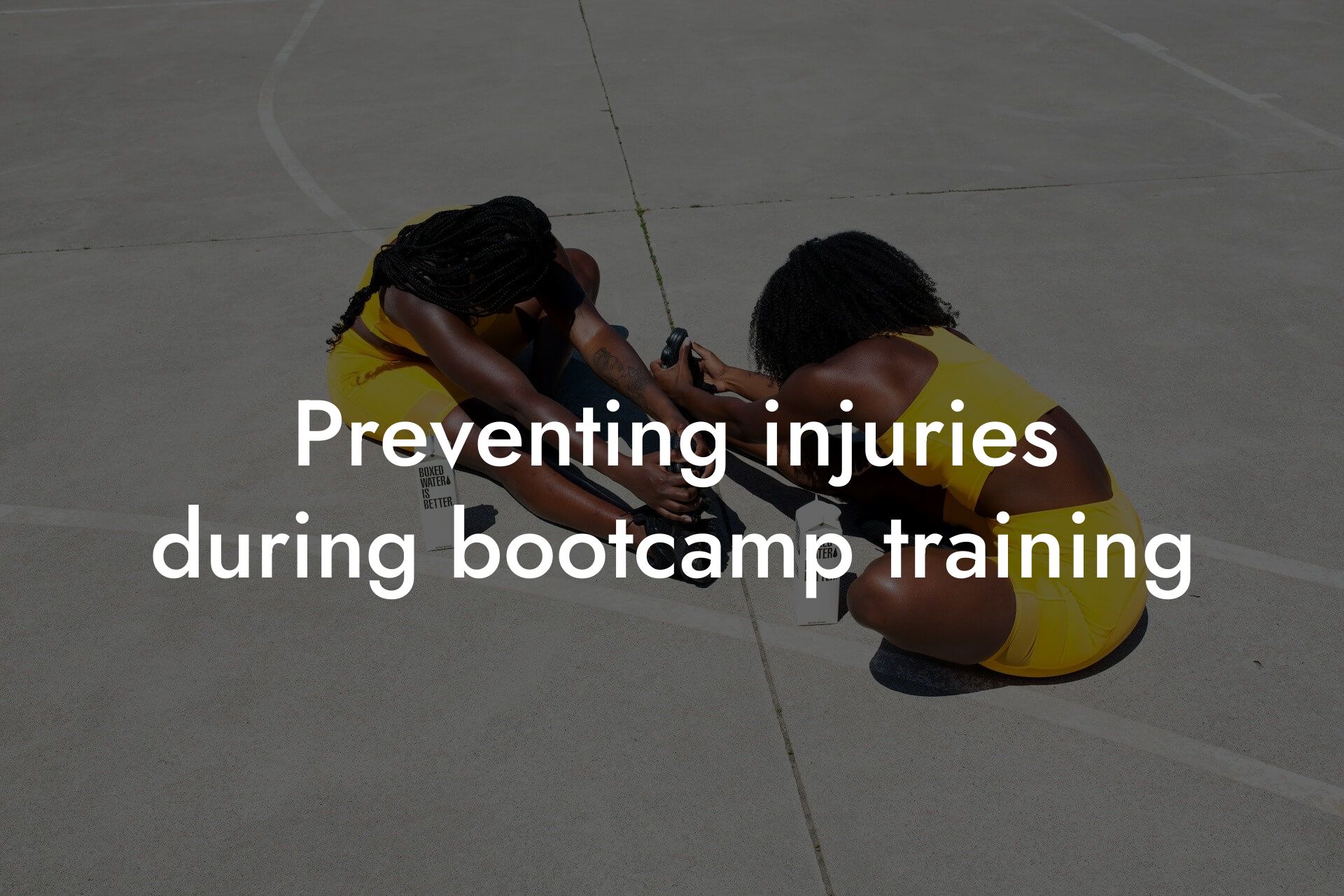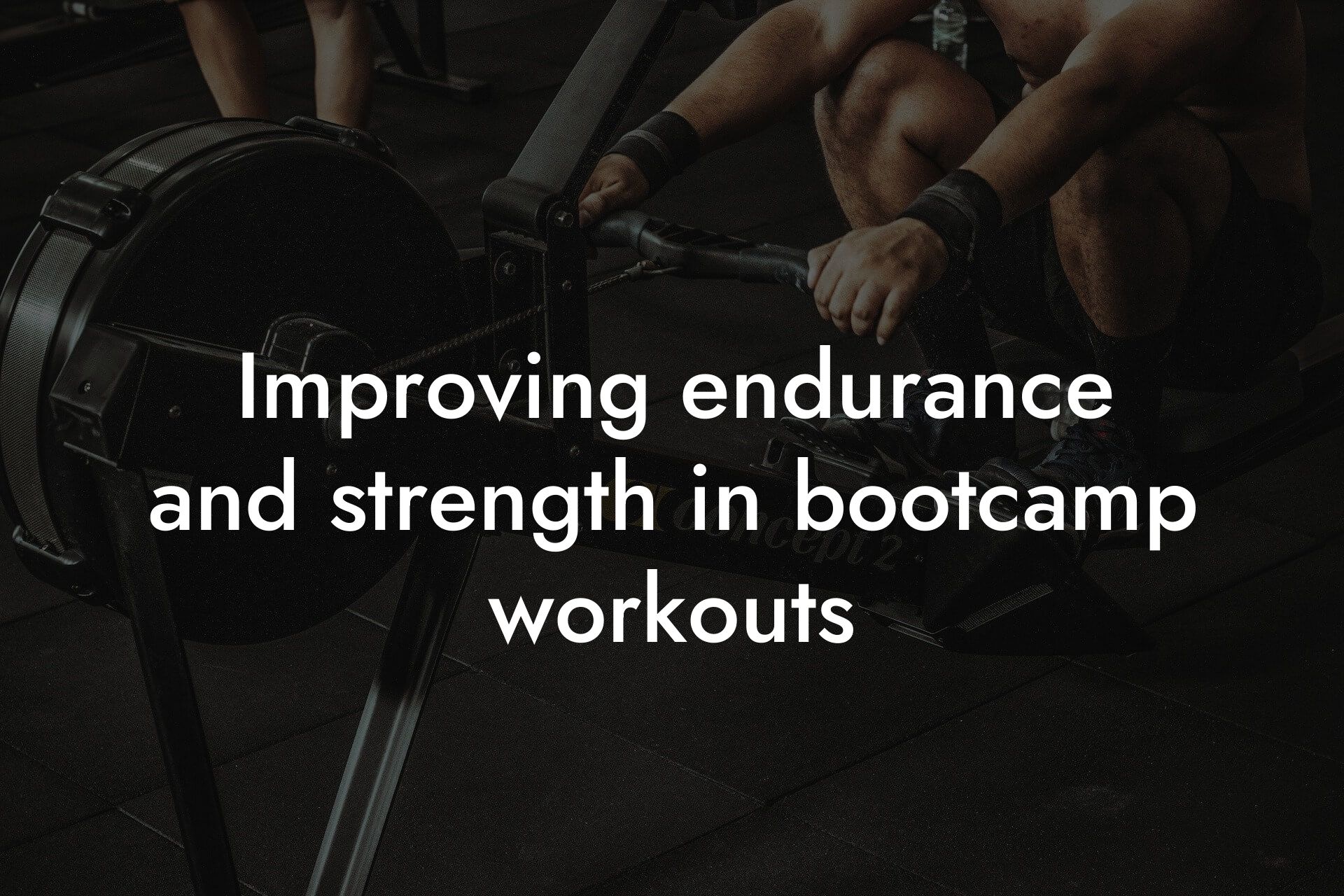Introduction to Bootcamp Training
Bootcamp training has become a popular choice for individuals seeking a challenging and effective way to improve their physical fitness. This high-intensity training program combines elements of strength training, cardio, and agility exercises to push participants to their limits. However, to get the most out of bootcamp training, it's essential to strike a balance between strength, speed, and flexibility. In this article, we'll delve into the importance of each component and provide guidance on how to achieve a well-rounded fitness regimen.
Table of Contents
- Introduction to Bootcamp Training
- Why Strength Matters in Bootcamp
- The Importance of Speed and Agility in Bootcamp
- Flexibility and Mobility: The Often-Overlooked Component
- How to Balance Strength, Speed, and Flexibility in Bootcamp
- Sample Workout Routine
- Common Mistakes to Avoid
- Get a Comprehensive Body Assessment with Tano Performance Group
- Frequently Asked Questions
Why Strength Matters in Bootcamp
Building strength is a crucial aspect of bootcamp training. It enables individuals to perform daily tasks with ease, enhances overall athleticism, and boosts metabolism. In a bootcamp setting, strength training exercises such as squats, lunges, and deadlifts are used to improve muscular power and endurance. A strong foundation in strength training also reduces the risk of injury and improves overall performance in other aspects of the program.
The Importance of Speed and Agility in Bootcamp
Speed and agility training are essential components of bootcamp training. These exercises, such as sprints, shuttle runs, and cone drills, improve acceleration, deceleration, and quick changes of direction. This type of training enhances cardiovascular fitness, increases caloric burn, and boosts overall athleticism. In a bootcamp setting, speed and agility training are often incorporated into high-intensity interval training (HIIT) workouts, which have been shown to be effective for weight loss and improving cardiovascular health.
Flexibility and Mobility: The Often-Overlooked Component
Flexibility and mobility are often neglected in bootcamp training, but they play a critical role in overall fitness and performance. Good flexibility and mobility enable individuals to move efficiently, reduce the risk of injury, and improve overall range of motion. In a bootcamp setting, flexibility exercises such as stretching, foam rolling, and mobility drills should be incorporated into the training program to improve overall flexibility and mobility.
How to Balance Strength, Speed, and Flexibility in Bootcamp
Achieving a balance between strength, speed, and flexibility in bootcamp training requires careful planning and attention to detail. Here are some tips to help you strike a balance:
- Incorporate a mix of strength training, speed and agility exercises, and flexibility drills into your workout routine.
- Start with a strength training day, followed by a speed and agility day, and finish with a flexibility and mobility day.
- Incorporate HIIT workouts that combine strength, speed, and agility exercises.
- Make sure to include rest days and active recovery days to allow your body to recover and rebuild.
- Monitor your progress and adjust your training program as needed.
Sample Workout Routine
Here's a sample workout routine that incorporates strength, speed, and flexibility exercises:
- Monday (Strength Training): Squats, lunges, deadlifts, and bench press.
- Tuesday (Speed and Agility): Sprints, shuttle runs, cone drills, and agility ladder exercises.
- Wednesday (Rest Day)
- Thursday (Flexibility and Mobility): Foam rolling, stretching, and mobility drills.
- Friday (HIIT Workout): Burpees, jump squats, and mountain climbers.
- Saturday (Rest Day)
- Sunday (Active Recovery): Light yoga or a leisurely walk.
Common Mistakes to Avoid
When it comes to balancing strength, speed, and flexibility in bootcamp training, there are several common mistakes to avoid:
- Focusing too much on strength training and neglecting speed and agility exercises.
- Not incorporating enough flexibility and mobility exercises into your routine.
- Not allowing for adequate rest and recovery time.
- Not adjusting your training program as needed.
Balancing strength, speed, and flexibility in bootcamp training is crucial for achieving overall fitness and performance. By incorporating a mix of strength training, speed and agility exercises, and flexibility drills into your workout routine, you can improve your overall athleticism, reduce the risk of injury, and enhance your overall physical fitness. Remember to monitor your progress, adjust your training program as needed, and allow for adequate rest and recovery time. With dedication and consistency, you can achieve a well-rounded fitness regimen that will take your physical fitness to the next level.
Get a Comprehensive Body Assessment with Tano Performance Group
At Tano Performance Group, we understand the importance of having a comprehensive understanding of your body composition and fitness level. Our state-of-the-art DEXA machine provides a detailed body assessment, including body fat percentage, bone density, and muscle mass. With this information, you can tailor your workout routine to achieve your specific fitness goals. Contact us today to schedule your appointment and take the first step towards achieving your ideal physique.
Frequently Asked Questions
What is the importance of balancing strength, speed, and flexibility in bootcamp?
Balancing strength, speed, and flexibility in bootcamp is crucial because it allows individuals to achieve overall fitness and athleticism. When these three components are in harmony, individuals can perform daily tasks with more efficiency, reduce their risk of injury, and enhance their overall physical appearance.
Why do I need to focus on strength training in bootcamp?
Strength training is essential in bootcamp because it helps build muscle mass, increase bone density, and boost metabolism. Having strong muscles also enables individuals to perform daily tasks with more energy and endurance, making it an essential component of overall fitness.
How does speed training benefit me in bootcamp?
Speed training in bootcamp improves agility, acceleration, and reaction time. It also enhances cardiovascular endurance, allowing individuals to perform high-intensity exercises for longer periods. Additionally, speed training boosts metabolism, helping with weight loss and fat burning.
What are the benefits of flexibility training in bootcamp?
Flexibility training in bootcamp improves range of motion, reduces muscle tension, and enhances overall mobility. It also helps prevent injuries, improves posture, and reduces muscle soreness. Furthermore, flexibility training enables individuals to perform exercises with proper form and technique, reducing the risk of injury.
How can I achieve a balance between strength, speed, and flexibility in bootcamp?
Achieving a balance between strength, speed, and flexibility in bootcamp requires a well-structured workout plan that incorporates exercises that target each component. It's essential to allocate time for each component, ensuring that no single component is neglected. A balanced workout plan should include a mix of strength training, cardio exercises, and flexibility exercises.
What are some effective strength training exercises for bootcamp?
Effective strength training exercises for bootcamp include squats, deadlifts, bench press, rows, and lunges. These exercises target multiple muscle groups, building overall strength and muscle mass. It's essential to incorporate compound exercises that work multiple joints and muscle groups simultaneously.
How can I improve my speed and agility in bootcamp?
Improving speed and agility in bootcamp requires incorporating exercises that target fast-twitch muscle fibers. Examples of effective speed and agility exercises include sprints, shuttle runs, box jumps, and cone drills. These exercises improve acceleration, deceleration, and reaction time, making individuals more agile and quick.
What are some effective flexibility exercises for bootcamp?
Effective flexibility exercises for bootcamp include yoga, Pilates, and dynamic stretching exercises. These exercises improve range of motion, reduce muscle tension, and enhance overall mobility. Examples of dynamic stretching exercises include leg swings, arm circles, and hip rotations.
How often should I train each component in bootcamp?
The frequency of training each component in bootcamp depends on individual goals and fitness levels. A general rule of thumb is to allocate 2-3 days for strength training, 2-3 days for speed and agility training, and 1-2 days for flexibility training. It's essential to allow for rest days to enable the body to recover and rebuild.
Can I focus on one component and neglect the others?
No, focusing on one component and neglecting the others can lead to imbalances and increased risk of injury. For example, focusing solely on strength training can lead to muscle imbalances and neglect of cardiovascular endurance. It's essential to incorporate a balanced workout plan that targets all three components.
How can I incorporate bootcamp into my busy schedule?
Incorporating bootcamp into a busy schedule requires planning and commitment. It's essential to schedule workout sessions in advance, prioritize self-care, and make healthy lifestyle choices. Even small amounts of exercise, such as 20-30 minutes per session, can be beneficial when done consistently.
What are the benefits of group fitness classes in bootcamp?
Group fitness classes in bootcamp provide accountability, motivation, and social support. They also offer a variety of exercises and workout styles, keeping workouts fresh and exciting. Group fitness classes can help individuals stay motivated and engaged, leading to better adherence to their workout routine.
Can I do bootcamp at home or do I need to join a gym?
Bootcamp can be done at home or in a gym, depending on individual preferences and goals. At-home workouts can be convenient and cost-effective, while gym-based workouts provide access to equipment and social support. It's essential to choose a workout environment that motivates and inspires individuals to reach their fitness goals.
How can I track my progress in bootcamp?
Tracking progress in bootcamp can be done through various methods, including body fat percentage measurements, weight, measurements, and progress photos. It's essential to track progress regularly, making adjustments to the workout plan as needed. Tracking progress helps individuals stay motivated and focused on their fitness goals.
What are some common mistakes to avoid in bootcamp?
How can I stay motivated in bootcamp?
Staying motivated in bootcamp requires setting realistic goals, finding a workout buddy, and rewarding progress. It's essential to celebrate small victories, focus on the process rather than the outcome, and remind oneself of the reasons for starting bootcamp in the first place.
Can I do bootcamp if I have any health concerns or injuries?
Individuals with health concerns or injuries can modify bootcamp exercises to accommodate their needs. It's essential to consult with a healthcare professional or fitness expert to develop a customized workout plan that takes into account any health concerns or injuries.
How long does it take to see results in bootcamp?
The time it takes to see results in bootcamp varies depending on individual goals, fitness levels, and consistency. Generally, individuals can expect to see noticeable results within 4-6 weeks of consistent training and healthy lifestyle choices.
What are some healthy nutrition tips to support bootcamp?
Healthy nutrition tips to support bootcamp include eating lean protein, complex carbohydrates, and healthy fats. It's essential to stay hydrated, avoid processed foods, and fuel the body with nutrient-dense foods to support muscle growth and recovery.
Can I do bootcamp if I'm a beginner?
Yes, beginners can do bootcamp! It's essential to start slowly, listen to the body, and progress gradually. Beginners can start with modified exercises and gradually increase intensity and difficulty as they become more comfortable.
How can I make bootcamp a sustainable lifestyle change?
Making bootcamp a sustainable lifestyle change requires commitment, consistency, and patience. It's essential to set realistic goals, find a workout routine that is enjoyable, and make healthy lifestyle choices a habit. By doing so, individuals can maintain their fitness gains and continue to progress towards their goals.
What are some common myths about bootcamp?
Here are some related articles you might love...
- How DEXA scans can benefit bootcamp enthusiasts
- Preventing injuries during bootcamp training
- Improving endurance and strength in bootcamp workouts
- Reducing body fat for improved bootcamp workout results
- The importance of bone density in bootcamp fitness
- Strength training tips specific to bootcamp exercises
- How body composition affects bootcamp fitness performance
- Nutrition tips for sustained energy during bootcamp sessions
- Maintaining muscle recovery with bootcamp training
Zak Faulkner
Zak Faulkner is a leading authority in the realm of physical health and body composition analysis, with over 15 years of experience helping professionals optimise their fitness and well-being. As one the experts behind Tano Performance Group, Zak has dedicated his career to providing in-depth, science-backed insights that empower clients to elevate their physical performance and overall health.
With extensive knowledge of DEXA technology, Zak specializes in delivering comprehensive body assessments that offer precise data on body fat, muscle mass, bone density, and overall physique. His expertise enables individuals to make informed decisions and achieve their fitness goals with accuracy and confidence. Zak’s approach is rooted in a deep understanding of human physiology, combined with a passion for helping clients unlock their full potential through personalised strategies.
Over the years, Zak has earned a reputation for his commitment to excellence, precision, and client-focused service. His guidance is trusted by top professionals who demand the best when it comes to their health. Whether advising on fitness programs, nutritional strategies, or long-term wellness plans, Zak Faulkner’s insights are a valuable resource for anyone serious about taking their health and fitness to the next level.
At Tano Performance Group, Zak continues to lead our Content Team revolutionising how professionals approach their physical health, offering unparalleled expertise that drives real results.




